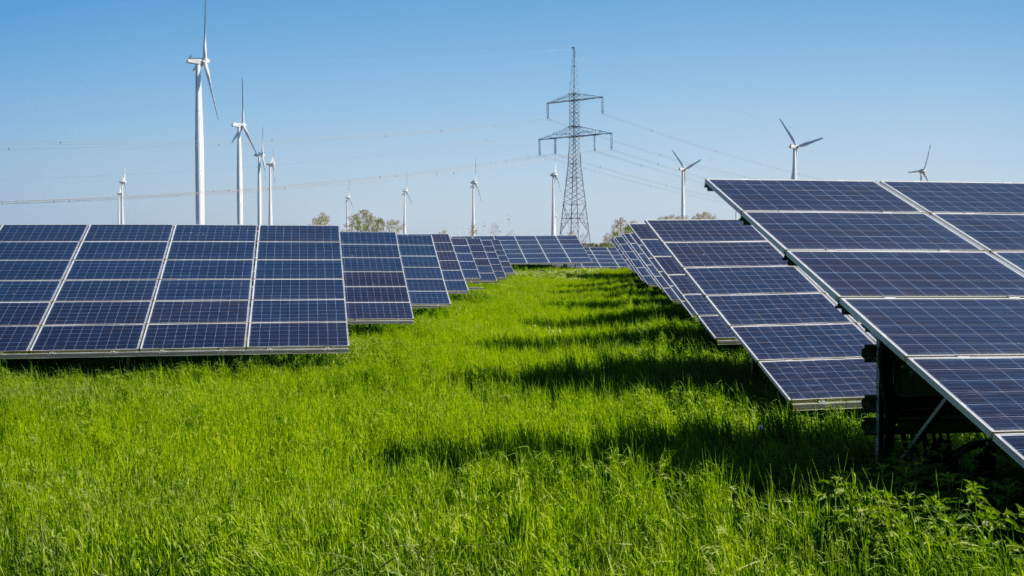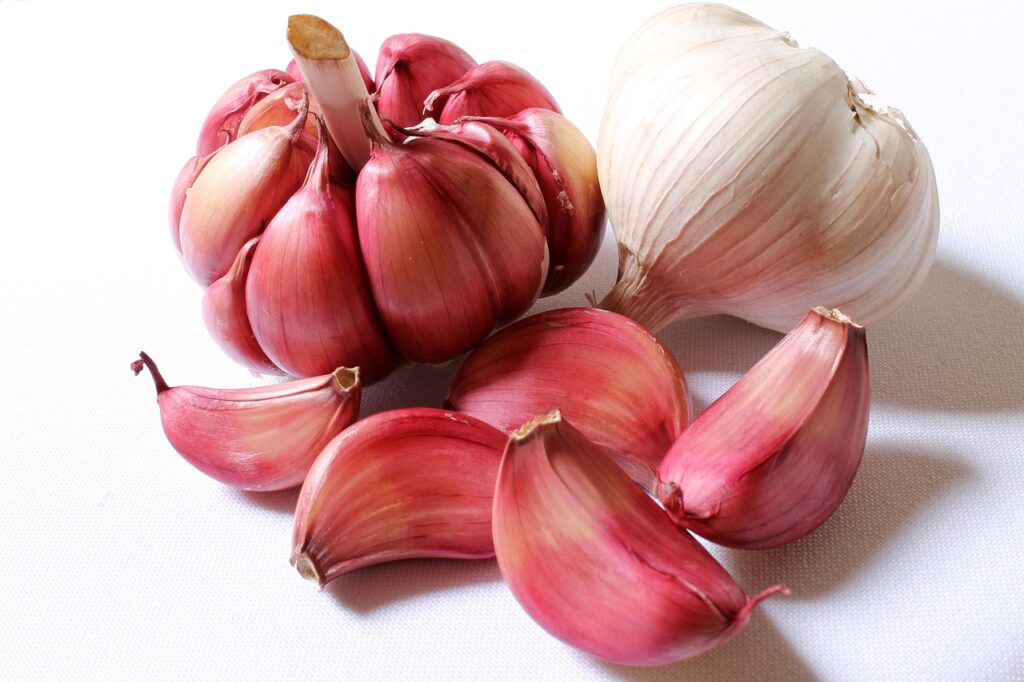Understanding the Impact of Eco-Friendly Living
Living an eco-friendly lifestyle impacts both personal health and the environment positively.
Health Benefits of Going Green
Eco-friendly living enhances physical well-being. Organic foods, for example, contain fewer pesticides. Reducing plastic use lowers potential toxin exposure.
Choosing natural cleaning products, which are free from harmful chemicals, improves indoor air quality. Walking or cycling as alternatives to driving increases physical activity levels, leading to better mental and physical health.
These simple changes cumulatively enhance overall wellness.
Environmental Advantages of Sustainable Practices
Sustainable habits protect the planet. Recycling reduces landfill waste, conserving natural resources. Using energy-efficient appliances decreases carbon dioxide emissions.
Supporting local produce minimizes the carbon footprint associated with long-distance food transportation. Reducing water usage helps conserve this vital resource.
Every small action, like using reusable bags, contributes to a healthier environment, supporting biodiversity and reducing pollution levels.
Step 1: Reduce, Reuse, Recycle
Adopting the “Reduce, Reuse, Recycle” mantra aids in minimizing waste and lowering environmental impact. Integrating these practices into daily routines promotes sustainability and conserves resources.
Implementing the 3 Rs in Daily Life
1. Reduce Waste: Lower waste generation by opting for items with minimal packaging and buying in bulk. Choose products with a longer lifecycle to avoid frequent replacements. Avoid single-use plastics by using reusable shopping bags, bottles, and containers.
2. Reuse Materials: Prolong the use of items through creative reuse. Repurpose glass jars to store dry goods, use old clothing as cleaning rags, and donate rather than discard goods. Shop secondhand or swap items with friends to extend their lifespan.
3. Recycle Properly: Sort recyclables accurately to ensure they end up in recycling facilities. Familiarize yourself with local recycling guidelines to avoid contamination. Recycle paper, cardboard, glass, and electronics to contribute to resource conservation and waste reduction.
Effectively practicing the 3 Rs in everyday life minimizes environmental footprint, conserves natural resources, and supports a healthier planet.
Step 2: Opt for Sustainable Transportation
Choosing eco-friendly transportation methods reduces carbon emissions and enhances physical fitness. This approach supports both personal health and environmental well-being.
Benefits of Biking and Walking
Biking and walking offer dual advantages—exercise and reduced pollution. Biking, for example, burns around 500 calories per hour. Walking at a moderate pace for 30 minutes can burn about 150 calories.
These activities improve cardiovascular health and reduce reliance on fossil fuels.
Carpooling and Public Transit Options
Carpooling and public transit lower the number of vehicles on roads, which reduces traffic congestion and carbon footprint. Carpool lanes in some cities decrease commute times
. Public transit, like buses and trains, typically emits fewer pollutants per passenger compared to single-occupancy vehicles. Supporting these options helps conserve energy and promotes cleaner air.
Step 3: Switch to Renewable Energy
Transitioning to renewable energy significantly reduces carbon footprints and supports a sustainable lifestyle. Harnessing solar and wind energy provides not only environmental benefits but also long-term financial savings.
Solar and Wind Energy Solutions for Home

Adopting solar and wind energy at home helps decrease reliance on fossil fuels. Solar panels, for example, convert sunlight into electricity, reducing energy bills and contributing to a cleaner environment.
With advancements in technology, the efficiency of solar panels has improved, making them a viable option for many households.
Wind turbines, suitable for areas with consistent wind speeds, generate electricity through wind power. Installing small turbines on your property can supply a significant portion of your energy needs.
Before installing, ensure the local zoning laws permit the installation of such equipment.
Combining both solar and wind solutions optimizes energy production, as they complement each other under different weather conditions.
It maximizes renewable energy usage, further cutting down on non-renewable energy consumption, benefiting both your household and the environment.
| Renewable Energy Source | Benefits |
|---|---|
| Solar Panels | Lowers electricity bills, reduces carbon footprint |
| Wind Turbines | Generates significant energy, renewable and sustainable |
Step 4: Eat Locally Sourced, Plant-Based Foods
Eating locally sourced, plant-based foods boosts health and supports the environment. Local farms, markets, and seasonal produce offer fresher, more nutritious options.
Advantages of Organic Farming
Organic farming practices exclude synthetic pesticides and fertilizers. This results in healthier soil and reduces chemical runoff, protecting water sources.
Antioxidant-rich vegetables and fruits, without harmful residues, become accessible with organic farming. By supporting organic farms, I help reduce the adverse environmental impact of conventional agriculture.
Step 5: Save Water and Energy
Conserving water and energy is vital for reducing environmental impact. Using a few simple strategies at home makes a significant difference.
Simple Tips for Conserving Resources at Home
- First, install low-flow fixtures. Faucets and showerheads with low flow rates reduce water usage by up to 50% without sacrificing functionality.
- Second, use energy-efficient appliances. Look for Energy Star labels when purchasing appliances to ensure maximum energy efficiency.
- Third, fix leaks promptly. A dripping faucet can waste over 3,000 gallons of water yearly. Regularly check and repair any leaks in pipes or fixtures.
- Fourth, use programmable thermostats. Set them to adjust the temperature when you’re away, saving up to 10% on heating and cooling costs annually.
Fifth, insulate your home. Proper insulation in your attic, walls, and floors reduces the need for excessive heating or cooling. Lastly, wash clothes in cold water. Washing machines consume significant energy to heat water; using cold water saves both energy and money.
By adopting these simple practices, you conserve water and energy and contribute to a healthier, eco-friendly lifestyle.
Step 6: Choose Eco-Friendly Products
Eco-friendly products reduce environmental impact and promote sustainability. Switching to these products helps preserve resources and supports a healthier lifestyle.
Identifying Sustainable Brands and Materials
Finding sustainable brands involves researching companies committed to eco-friendly practices. Look for certifications like Fair Trade, USDA Organic, and Green Seal.
Materials such as:
- organic cotton
- bamboo
- recycled plastic
Provide lower environmental footprints. For example, clothing brands using organic cotton often tout its benefits, including less water usage and no toxic pesticides. Recycled plastic is often used in products from shoes to kitchenware.
Step 7: Practice Eco-Friendly Gardening
Eco-friendly gardening offers numerous benefits, like reducing your carbon footprint and promoting biodiversity. Sustainable gardening practices make a significant difference.
How to Start a Sustainable Garden
Starting a sustainable garden requires consideration of several factors.
- First, choose native plants—they adapt well to local climates and need less water or fertilizer.
- Next, use organic seeds and plants, avoiding genetically modified organisms and chemicals.
- Set up a compost system to recycle kitchen waste and enrich soil naturally.
- Collect rainwater for irrigation to conserve water. Use mulch to retain moisture and suppress weeds, minimizing the need for pesticides.
- Incorporate companion planting techniques by growing plants that benefit each other, reducing pests and boosting growth.
- Opt for manual tools instead of powered garden equipment to lower energy consumption.
By following these guidelines, sustainable gardening not only helps the environment but also yields healthier plants and produce.
Step 8: Volunteer for Environmental Causes
Taking proactive steps, like volunteering for environmental causes, enhances both personal well-being and community health. By dedicating time to these activities, I can contribute to preserving our planet for future generations.
Community Clean-Ups and Other Activities
Participating in community clean-ups directly impacts local ecosystems. I join neighborhood groups to remove litter from parks and beaches, reducing pollution.
Organized events, such as tree planting and invasive species removal, also provide hands-on experience in conservation. Through these activities, I support wildlife and encourage sustainable practices.
Step 9: Educate Others About Sustainability
Educating others about sustainability fosters broader awareness and engagement. By sharing knowledge and resources, I can drive meaningful change.
Sharing Knowledge and Resources
I share articles, books, and documentaries about sustainability with my friends and family. Examples include “The Lorax” by Dr. Seuss and “An Inconvenient Truth” by Al Gore.
I use my social media platforms to post tips on reducing waste, saving energy, and promoting eco-friendly products. I also organize workshops and seminars in my community, explaining the importance of sustainable living and showcasing practical steps.
Utilizing these resources helps spread valuable information.
Books, articles, and documentaries about sustainability:
| Resource | Type | Description |
|---|---|---|
| “The Lorax” | Book | A children’s story illustrating the conflict between industry and nature. |
| “An Inconvenient Truth” | Documentary | Al Gore’s film on climate change and global warming. |
| “Silent Spring” | Book | Rachel Carson’s work on environmental science and pesticide impact. |
Sharing these resources makes the concept of sustainability more accessible to a wider audience.
Engaging in Educational Activities
I participate in local environmental groups to further educational outreach. By hosting or joining talks and discussions, I promote sustainable practices and encourage others to do the same.
For example, I invite experts to speak at events, providing valuable insights and fostering community involvement. Creating educational content, like blog posts or instructional videos, allows me to engage with a broader audience.
Types of educational activities:
- Workshops and seminars.
- Community discussions.
- Expert talks.
- Social media campaigns.
- Educational blog posts.
These activities create opportunities for people to learn about and adopt sustainable practices.
Advocating for Sustainable Policies
I support sustainable policies by attending town hall meetings and participating in local government initiatives. By voicing my opinion on policies that affect the environment, I help shape the community’s approach to sustainability. Petitions and campaigns are effective ways to advocate for change. I collaborate with environmental organizations that push for policy reforms. Sharing success stories from other regions demonstrates the potential benefits of sustainable policies.
- Attending town hall meetings.
- Participating in local government initiatives.
- Signing and promoting petitions.
- Joining advocacy groups.
Step 10: Stay Informed on Environmental Issues
Staying informed on environmental issues helps make better decisions and advocate for positive change. Engage with credible sources and stay up-to-date with current information.
Sources for Credible and Current Information
Selecting reliable sources ensures accurate and current updates. Check information from:
- Government Agencies: NASA, EPA, and NOAA provide timely data and reports on environmental changes.
- Educational Institutions: Universities like Stanford and MIT publish research findings and articles on sustainability.
- Non-Governmental Organizations (NGOs): Groups like WWF and Greenpeace offer insights into ongoing environmental campaigns and statistics.
- Scientific Journals: Publications such as Nature and Environmental Research Letters feature peer-reviewed articles.
- News Outlets: Reputable media like The Guardian’s environmental section and National Geographic cover environmental developments.
Subscribers of these sources gain access to comprehensive, evidence-based information.


 is the visionary founder of Eco Elegance Technique, a platform dedicated to blending sustainability with beauty and fashion. With a background in environmental science and fashion design, Lauranne has spent her career pioneering eco-friendly practices in both industries. Her work has influenced a shift towards ethical sourcing, waste reduction, and the use of organic materials. Passionate about education, she frequently speaks at conferences and works to inspire others to embrace a sustainable lifestyle.
is the visionary founder of Eco Elegance Technique, a platform dedicated to blending sustainability with beauty and fashion. With a background in environmental science and fashion design, Lauranne has spent her career pioneering eco-friendly practices in both industries. Her work has influenced a shift towards ethical sourcing, waste reduction, and the use of organic materials. Passionate about education, she frequently speaks at conferences and works to inspire others to embrace a sustainable lifestyle.
